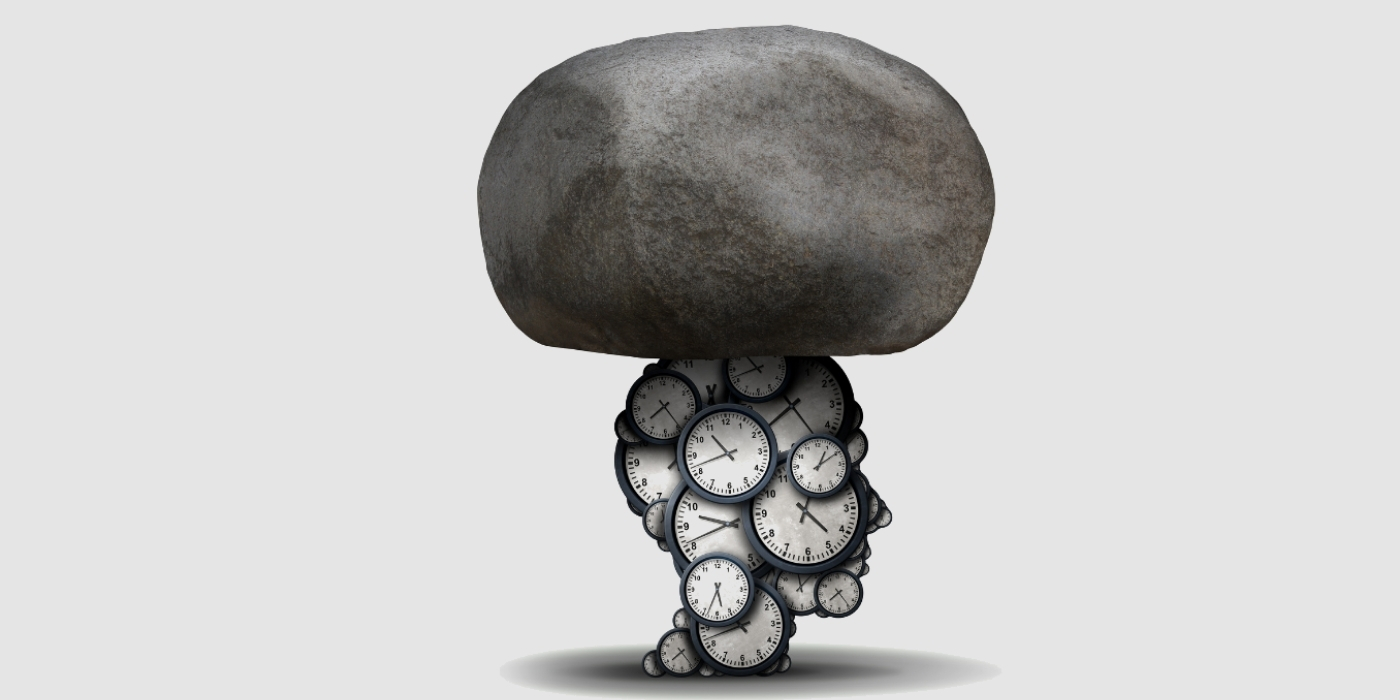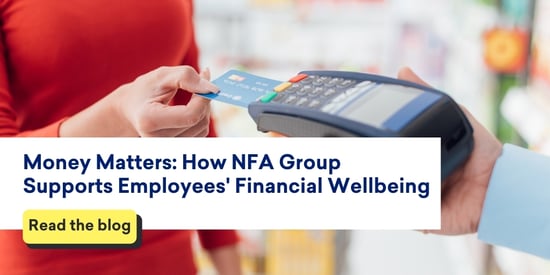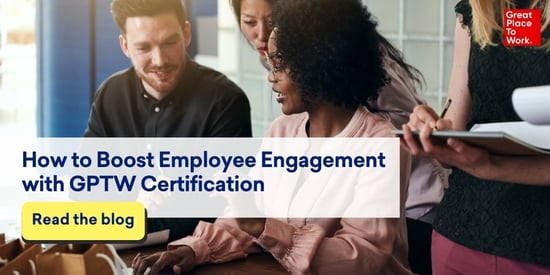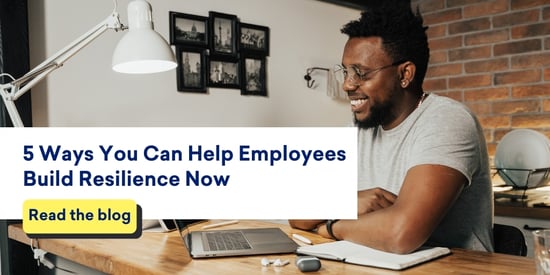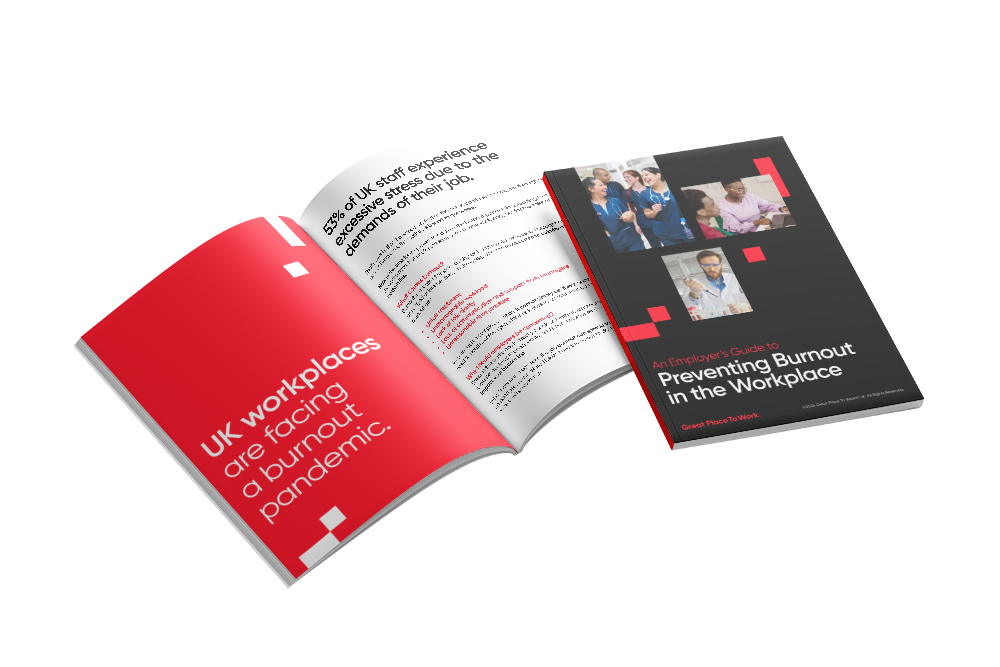Great Place to Work® UK is delighted to announce our new partnership with an organisation equally devoted to the cause of genuine employee wellbeing: Thrive: Mental Wellbeing – the only clinically effective, NHS-approved mental wellbeing app for employees.
As the UK moves towards the 1-year anniversary of entering into our first national lockdown, millions across the UK population have now had their first jab of the vaccine. Spring seems to have arrived on our doorstep overnight and the government’s recent step-by-step plan to end lockdown in England has brought a new sense of hope and excitement for many.
Yet with all the positivity, it’s clear there is still a long way to go. The reported statistic of 1 in 6 UK workers experiencing a mental health issue at any one time last year means leaders need to ensure that anyone affected has easy access to the support and services they need, within a caring organisational culture.
Keep reading for an in-depth look at what encompasses an effective wellbeing strategy, and what practical steps can be taken to start improving your employees’ mental wellbeing - without the need for major financial investment.
What the Term ‘Wellbeing Strategy’ Really Means
Let’s take a look at what encompasses a ‘culture of wellbeing’ which, at its best, always stems from a strategic approach.
The term ‘wellbeing strategy’ has grown to be a buzzword that, sadly, rarely lives up to its true definition. In response to the Covid-19 pandemic, 44% of UK organisations surveyed by the CIPD in 2020 claimed to have a wellbeing strategy – a 40% increase from 2019!
However, companies and business leaders claiming to have a polished wellbeing strategy often simply showcase a bundle of wellness-related perks and benefits. They may offer employees mindfulness programmes, bring in pension advisors, share nutrition advice or encourage staff to try ‘Couch to 5K’. And while all of these can be wonderful initiatives in their own right, they do not equate to a holistic wellbeing strategy.
A true wellbeing strategy – by definition – involves identifying an initial challenge and objective, with a plan of action to get there. This could be reducing work-related stress or improving mental health by encouraging employees to practice self-care, stemming from poor results in an employee survey, or red flags from line manager check-ins. An objective around improving mental wellbeing could then include deploying specific tools (such as the Thrive app), supplemented by active efforts to increase mental health awareness in the company, with leaders and people managers role modelling an open and psychologically safe culture.
Ongoing wellbeing monitoring would then form a data-driven basis for adjusting the strategy in a cycle of continuous improvement. Such a strategic approach, which relies directly on first-hand data, is far more likely to sustain employee wellbeing in the long-term compared to arbitrarily handing out wellness perks, no matter how generous these may seem.

Better Together
Looking after employees' mental health isn't easy, especially when we try to do it alone. Learn how our wellbeing specialists can support your wellbeing strategy.
For Dr Andres Fonseca, CEO and Co-Founder of Thrive, there are three important stages needed to ensure you develop an effective wellbeing strategy:
“The first stage is to understand your company and the specific challenges your workforce is facing. Once you know that, then apply the knowledge of experts to create the right strategy. This includes knowing what to measure and how to measure it. The third stage is using the data you have gathered through those outcomes that you know measure wellbeing to refine your strategy. The data will tell you what is working and what isn't. Based on that, you can eliminate what isn't working, do more of what is working, and try other strategies if your first approach was not entirely successful.”
Dr Fonseca also recognises the impact of Covid-19 which has “massively” impacted the definition of ‘wellbeing strategy’. Looking ahead to trends we may see in a post-Covid world, he continues: “that first stage that I was talking about would have to be revisited.
“Even those things that companies were measuring pre-Covid might not be the right things to measure later. A lot of the strategies companies had in place were designed to work when employees were at their premises. Covid-19 changed all that, so it requires re-thinking all the strategies. I think everything that has been created to enable staff to access help remotely and independent of their work premises is here to stay. This radical rethinking of what a workplace is and how to tackle wellbeing when your employees are working from home, I think, will endure past the end of the pandemic.”
Stage 1: Measuring Wellbeing in Your Workplace
A wellbeing strategy ideally begins with a baseline assessment of employees’ experiences and wellbeing levels. One such method is via the Great Place to Work® UK Wellbeing Index, administered to employees online via our Emprising™ survey platform. The Index, comprising 17 unique statements, measures how employees feel about the ways their organisation nurtures their psychological, physical, social and financial wellbeing at work.
In addition to forming the best strategic foundation, the act of surveying employees in itself demonstrates care by taking time to gather and understand how people are feeling (especially vital during times of uncertainty or crisis).
And while asking once is a good start, measuring wellbeing should really be done multiple times throughout the year. Here, pulse surveys provide an ideal way to stay tuned into employees’ experience regularly – even better if your pulse survey platform allows you to collect feedback in real-time!
Stage 2: Monitoring Mental Wellbeing
Consider the following scenario: You’ve recently run a wellbeing survey to kick off the cycle of building a holistic wellbeing strategy in your organisation. Now it’s time to scrutinise your results.
During your analysis, you begin to realise there may be a large proportion of employees struggling to take care of their mental health, or feeling that their organisation doesn’t encourage them to do so. In particular, you notice low scores in response to statements such as “My organisation actively promotes mental and physical health among its employees” and “My organisation genuinely prioritises employee wellbeing”. For HR leaders, these are key indicators of how far along the journey to a culture of wellbeing they are, received directly from the horse’s mouth.
One strategic solution to your deficit could be to introduce the Thrive app to your workforce, alongside an internal communications campaign around mental wellbeing - hopefully leading to increased scores in a follow-up survey.
Stage 3: Sustaining Your Wellbeing Strategy
Since wellbeing is a specialised area of knowledge, managing an organisation’s wellbeing strategy should sit with whomever has the right expertise.
“It’s a complex subject and there will be many people out there claiming to understand it,” says Dr Fonseca. “To ensure that you have the right strategy, you need to ensure that a real expert with the right qualifications and experience has helped you design it and also deliver it if you don't have the necessary resources in-house.”
How Line Managers Can Help
Line managers are placed at the intersection of organisational culture and employees’ individual experiences. Continuous touchpoints, such as one-to-ones, offer valuable opportunities for stress monitoring, spotting signs of poor mental health, and assessing support needs of employees.
It’s important, however, that organisations are careful not to overburden these managers, who tend to have significant work pressures of their own. “The employer should create the right opportunities and offer the right resources, but it is the employee's responsibility to act on those,” Dr Fonseca explains.
“So, in a way, most of the responsibility lies with the employee to look after their own wellbeing. Provided, of course, the employee has access to all the right resources and has an employer that enables them the time to actually take advantage of those opportunities.”
In the same vein, possibly the best contribution a line manager can make to their organisation’s wellbeing strategy is to showcase genuine care, creating a safe space for employees’ to talk about their challenges and needs. It’s then up to individuals to speak up as and when needed.
Role-Modelling by Senior Leaders
To role model a culture of wellbeing, managers need to be seen prioritising their own self-care, thereby encouraging others to do the same.
Just as senior leaders are tasked with role modelling company values, “they should [also] be visible when wellbeing initiatives are rolled out and really show that they themselves are engaging with these initiatives,” says Dr Fonseca. “They should speak openly about their own wellbeing challenges and do their utmost to reduce stigma. They should also make sure resources are allocated to wellbeing and that it is not seen as simply an afterthought.”
If the Thrive app is a tool offered to employees, for example, this is an ideal opportunity for role modelling. “We do have many managers that use the app and are very vocal about the benefits it confers to them for their own wellbeing. HR directors are actually some of the best at using it and talking about it.
“Unfortunately, we have fewer C-level leaders that have publicly spoken about the app and shown to the workforce that they value it and use it. This is true of the Thrive app, but also true of other wellbeing initiatives. I have not seen many C-level leaders participating in exercise challenges, diet challenges or other activities like that. I think they may see it as self-indulgent or maybe they may tell themselves they don't have the time. It is however important to make the time, not just for the sake of their own health, but also for that of their employees.”
Our Great Place to Work® UK wellbeing offering has been in full swing supporting clients in their journey towards a culture of wellbeing since 2018. This year, we look forward to working together with Thrive to encourage even more businesses to develop a sustainable, effective wellbeing strategy for all.

Supporting Your Employee Wellbeing Strategy
Get data-driven insights and interventions to develop a culture of wellbeing, and learn how your organisation can obtain official recognition for nurturing your employees' wellbeing.
Recommended for you
